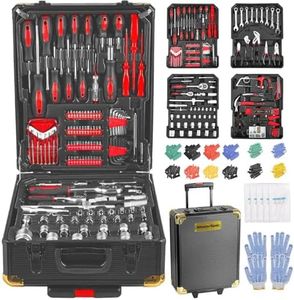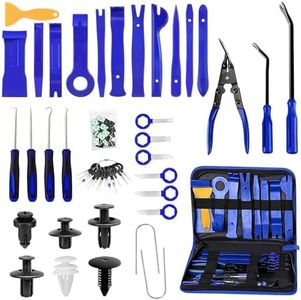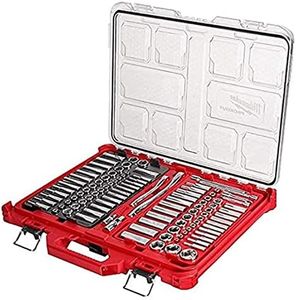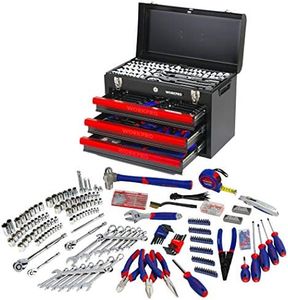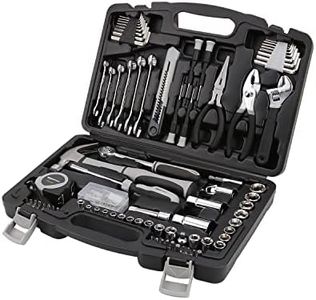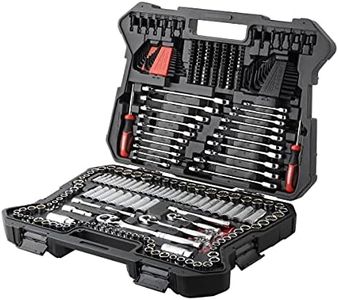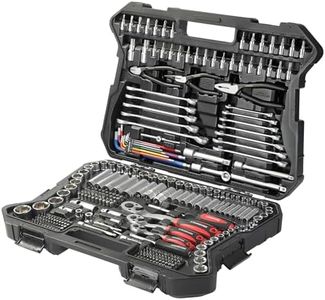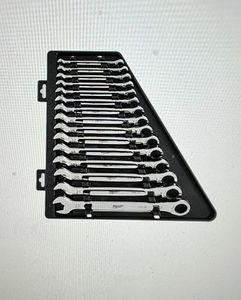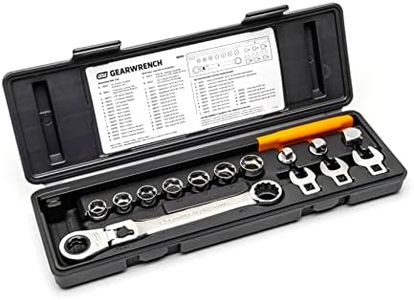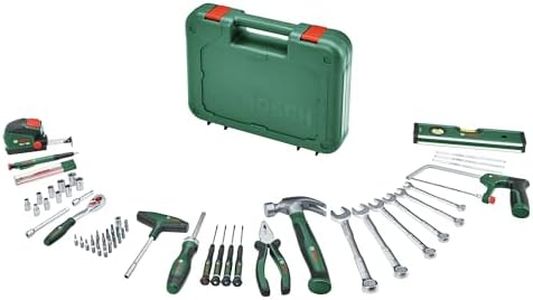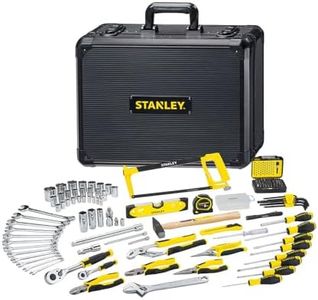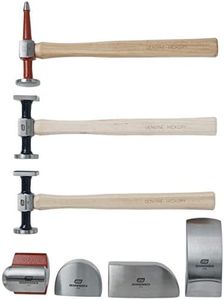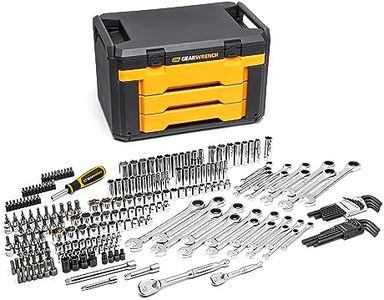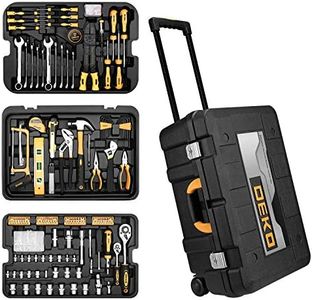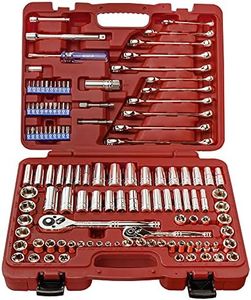We Use CookiesWe use cookies to enhance the security, performance,
functionality and for analytical and promotional activities. By continuing to browse this site you
are agreeing to our privacy policy
10 Best Automotive Tool Sets
From leading brands and best sellers available on the web.By clicking on a link to a third party's website, log data is shared with that third party.
Buying Guide for the Best Automotive Tool Sets
Choosing an automotive tool set is an important decision, as it determines how well-equipped you’ll be for various car repairs and maintenance tasks. The right tool set not only makes these jobs safer and more efficient, but can also save money and time in the long run. To make the best choice, consider what kinds of automotive work you expect to do, your level of experience, and how much space or portability you require. It's crucial to evaluate the set’s quality, completeness, and usability for your needs.Number of PiecesThe number of pieces in an automotive tool set refers to the total items included, like sockets, wrenches, screwdrivers, and accessories. This is important because it gives you an idea of how comprehensive the set is and whether it covers most common repair and maintenance tasks. Smaller sets with fewer pieces often focus on essential tools for basics like oil changes or tire rotations, and are suitable for beginners or emergency kits. Mid-sized sets cater to common home garage tasks, offering more socket sizes and specialized tools. Large sets provide an extensive range, suitable for enthusiasts or those tackling a wide variety of repairs. The right size for you depends on the complexity of your projects and the range of vehicles you plan to work on.
Tool MaterialMaterial refers to what the tools are made of, which often determines their durability and suitability for heavy use. Most reputable sets use chrome vanadium steel or similar alloys, which resist rust and wear, and provide strength for loosening stubborn bolts. Lower-quality materials may fail under heavy torque. If you plan infrequent, light tasks, material may be less critical, but for frequent or demanding work, high-grade steel ensures reliability and longer life for your tools.
Drive SizeDrive size relates to the size of the ratchet and socket connection, usually measured in inches (such as 1/4”, 3/8”, and 1/2”). Each size is suited to different kinds of jobs: 1/4-inch is for smaller, delicate or tight-space tasks; 3/8-inch is the middle ground for most car maintenance; 1/2-inch is for heavy-duty work like suspension or large bolts. Picking the right set means thinking about the type of vehicles you’ll be working on and the complexity of jobs you expect to do. Sets that include a mix of drive sizes offer the most flexibility.
Range of Tool TypesThis refers to the variety of tools included, such as ratchets, wrenches, screwdrivers, pliers, and specialty automotive tools (like spark plug sockets or breaker bars). Sets with a wide range cover more repair and maintenance scenarios, while basic sets may include only general-purpose tools. Consider what tasks you plan to tackle: a broader range is valuable if you want to handle diagnostics, electrical, mechanical, or body work, whereas a basic assortment suits simple maintenance.
Case and OrganizationThe storage case is how the tools are stored and organized, which affects portability and convenience. A sturdy, well-designed case keeps tools secure, easy to find, and ready to transport. Look for cases with dedicated slots for each piece to prevent loss or damage. If you plan to carry your tools out of the garage or need to keep things tidy, an organized, compact case is especially important.
Measurement SystemMeasurement system refers to whether the tools use metric, imperial (SAE), or both measurement standards. Metric is common for most modern vehicles, while SAE sizes may be used on older and domestic vehicles. If you work on a mix of vehicles, a set with both systems is ideal. Always check compatibility with the vehicles you'll be working on to avoid missing essential sizes.
